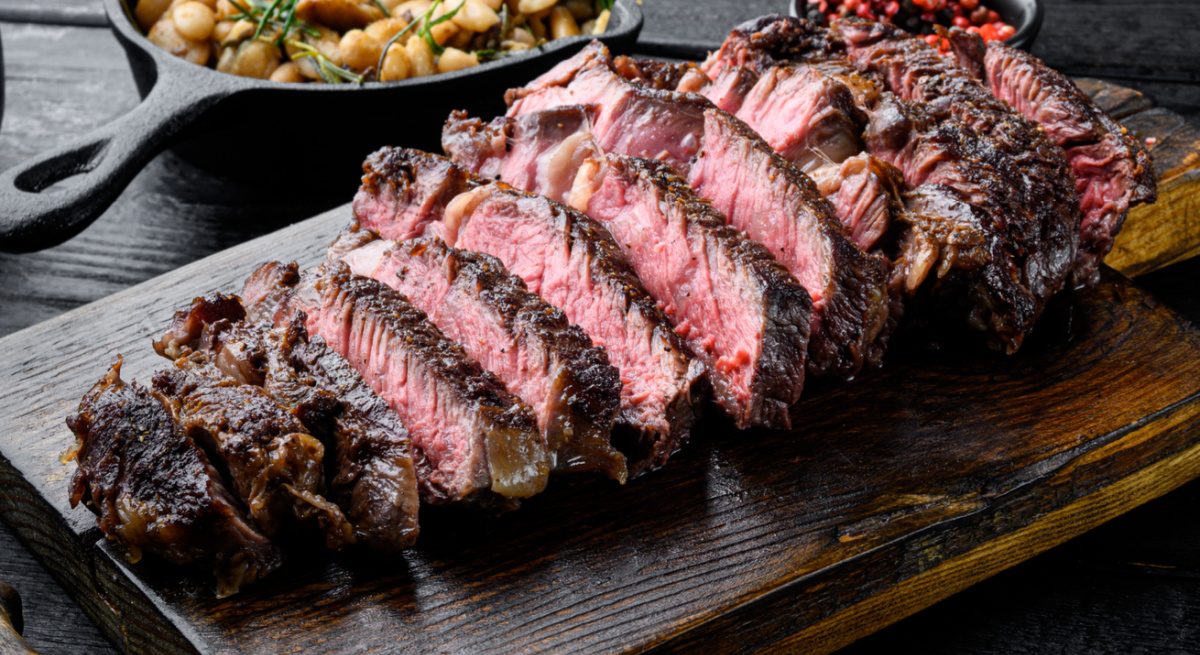How the Meat Supply Chain Can Meet the Demands of a Food Service Industry in Turmoil
4 Min Read By Justin Marx
Since the labor shortage across the supply chain is likely to persist past the short-term and with other costs also increasing, one of the few ways restaurants can maintain their margins without raising their prices is to find ingredients that have better yields and require less labor to prepare.
Restaurants were under pressure long before the pandemic shifted the ground underneath them. While restaurants are busier in 2021, they’re still maneuvering amidst a shifting pandemic landscape and are more exhausted and exasperated than ever. The biggest challenge many restaurant owners struggle to solve is finding enough kitchen labor. And when they do, it is invariably either expensive, novice or both. There has been a structural shift in the labor market as workers have found more stable, more interesting and/or less taxing jobs in other industries.
There is a lot of work to do, but the meat industry is in a good position to support food service operators. However, that’s dependent on redefining the term “customer” from wholesaler and retailer to end user. The strategic choice of a primary customer helps define business strategy and the distributor is in a unique position, given the pandemic driven market shift, to refine who the primary customer is. One great example of this shift in end user experience and redefining the customer is New Zealand’s Silver Fern Farms, with whom we’ve worked closely to design their products and optimize restaurant profitability. Our experience with them highlights how the meat supply chain can put customer needs first to benefit both restaurant and supplier bottom lines.
Let’s use simple figures to demonstrate how this redefinition can shift the profitability equation of restaurant operations. Silver Fern Farms’ ribeye roll has 32 percent better yields than standard ribeyes because they take the time to make it restaurant ready to slice into steaks. This provides producer fabricated and delivery ready product. To put this in context, at a $10 raw material cost if a chef wants to put a 12 oz steak on the menu, they can improve their food cost by $2.40 per portion. If an operator is open six days a week and sells 20 ribeye steaks a night for a year, that is a profitability improvement of $14,976 per year.
And that doesn’t include labor cost. We recently ran a test: it took our chef five minutes to break down a producer fabricated and delivery ready ribeye roll versus 15 minutes to breakdown a standard ribeye. If every single night a cook can save 20 minutes on their two ribeyes, labor drops by 104 hours per year, a savings of $2,392 (assuming an all-in labor/benefits cost of $23/hour). That’s a total annual savings of $17,368 just by switching to a supplier that is thinking about their customers’ needs, an enormous savings for a business that may be doing $2 million a year in sales. Improve profitability on ten menu items and the restaurant operator doesn’t have to worry as much about how to put her children through college.
It takes customer-centric thinking and identifying where in the supply chain the fabrication can be done most efficiently (Hint: it’s not at the restaurant level). As simple as that may sound in theory, it’s revolutionary in practice and takes a lot of effort throughout the supply chain.
So how do we get there as an industry?
First, the entire supply chain needs to crawl out of that wayback machine. Ask a meatman about product design and you will get a bewildered look. Product design? Most meat producers don’t even have a professional marketing staff, let alone a customer-centric mentality. Tradition dictates they simply cut up meat and throw it in a box without thinking about the end user and what they must deal with. By comparison, my marketing team is one-sixth of my workforce.
The supplier mandate: Build a diverse team staffed with marketing professionals who will obsess about the end users’ needs. This will create a struggle between the marketing department and the old guard. The old guard often can be distracted by short term profits or the status quo, which is demonstrated across the corporate landscape with many companies chasing quarterly profits instead of long term goals. For suppliers, start small but peel part of the production away from the commodity game and make sure the marketing team has a proper budget and a full voice to help drive long term decision-making. To do that ask these three questions: do you have a clear understanding of where you sit today? Where do you want to go tomorrow? What do you have to do to get there? Make sure the marketing leader is in the C Suite and can influence sourcing, operations and sales decisions to get to tomorrow.
The distributor mandate: A distributor must think of themselves as not only another point in the supply chain, but also key to distributing upstream and downstream product as well as information. A good distributor can become an exchange of ideas, patterns, successes and concerns. Suppliers and customers both benefit from understanding each other’s motivations and insights, and a great distributor can help make that happen to benefit all parties involved.
The restaurant operator mandate: A good operator is open to new menu ideas, product formats, new suppliers and new cuts. We have already seen this across the food landscape in the last year and a half with food consumption and purchasing changing, home cooking increasing and restaurant operations having to shift and adapt to accommodate the changes in daily behavior as a result of the pandemic. Some of these changes are here to stay. So it’s crucial as we near 2022 that restaurant operators break through the change aversion that is so stubborn in the industry. They must look past commodities toward specialized programs and support distributors they know will bring those innovative products to them.
The pandemic has upended everything. Let’s use it as an opportunity to move the meat industry into the future and help our customers make money.


